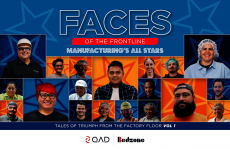Nestle collaboration to target genes and taste perception
to taste could enhance the development of foods that meet specific
consumer preferences and individual nutritional needs.
Evaluating the influence of individual genetic make-up on taste sensitivity is to be addressed by a new international collaboration involving the Nestlé Research Center (NRC), Alberto Santos Dumont Association for Science (Brazil), and Swiss Federal Institute of Technology (EPFL). "The collaboration between Nestlé Research and leading worldwide brain institutes will open a new dimension in sensory research, allowing Nestlé to provide a broad range of choices to meet personal taste and nutrition preferences," said Peter van Bladeren, Head of Nestlé Science and Research. According to the company, the findings of the research will enable the development a variety of food and beverage applications "to meet consumer needs at all ages and stages of life". The project, to be coordinated through the International Neuroscience Network Foundation (USA), will explore the links between an individual's genetic profile and taste sensitivity. Researchers will gather molecular-biological data from hundreds of ethnically-diverse individuals, and use this to compare genetic pre-disposition and metabolism with varying taste sensitivities. The information generated by these comparisons should deepen our understanding of the connections between genetics, metabolism and taste perception. A spokesperson for NRC told FoodNavigator.com that there were two main objections for the collaboration: "To better understand the interdependency of human genotype, taste sensitivity and metabolic state, and to identify clusters of people within the study population in which taste sensitivity patterns are correlated with genetic and metabolic biomarker profiles." "This is a first step towards identifying the opportunity for personalised solutions that address sensory preferences," added the spokesperson. Previous research into taste has revealed that the human tongue has about 10,000 taste buds with five taste sensations: sweet, bitter, and umami, which work with a signal through a G-protein coupled receptor; salty and sour which work with ion channels. Contrary to popular understanding, taste is not experienced on different parts of the tongue. Though there are small differences in sensation, which can be measured with highly specific instruments, all taste buds, essentially clusters of 50 to 100 cells, can respond to all types of taste. Taste buds (or lingual papillae) are small structures on the upper surface of the tongue that provide information about the taste of food being eaten. However, taste sensitivity differs greatly among individuals, and these differences, ranging from non-detectable to strong, are the physiological manifestations (phenotype) of individuals' unique genotypes. Established collaborations An agreement with EPFL, signed in November 2006, is Nestlé's largest collaboration with a university or research institute. The deal, costing the company up to CHF 5 million (€ 3.1 million) every year for five years, was focused on the role of nutrition in cognitive development in children, the prevention of cognitive decline in the elderly, to better understand the gut-brain axis, and the how humans smell, taste and see food Nestlé's support will fund the establishment of two endowed chairs at EPFL, fund specific projects to support the fundamental science, and then push for clinical trials and full development of potentially beneficial ingredients or food products. The new collaboration "builds on our ongoing collaboration with EPFL," said the spokesperson. "We collaborate with EPFL's experts in super-computing in order to mine huge biological data sets (genetic, taste sensitivity, health and metabolomic)."













